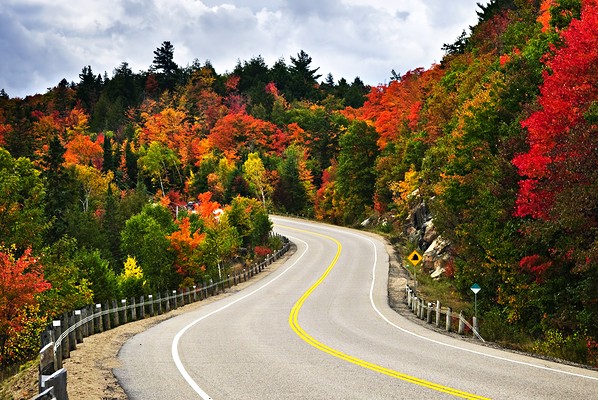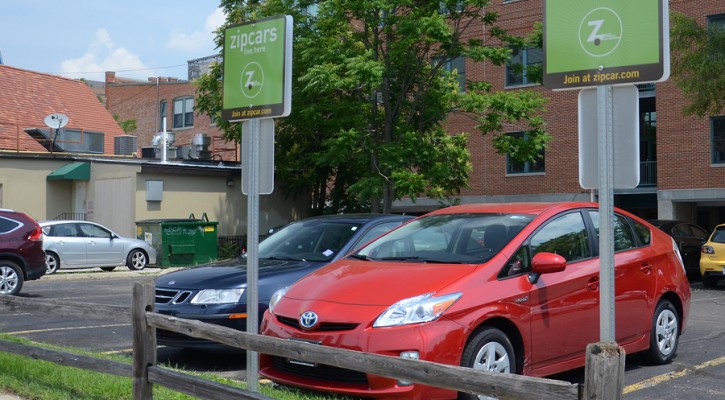
Road Trippin’ With A Learners Permit
August 4, 2014
Can you drive out of state with a learners permit?
That is an excellent question. There’s nothing like a nice, long road trip to let teen drivers practice their skills. However, the answer to this question depends on which state you live in, and which states you plan to drive through.
Nearly every U.S. state allows its permit drivers to operate a vehicle across state lines, but not all states allow out-of-state permit drivers. For example, there are currently six states (New Hampshire, Arizona, Hawaii, Vermont, Pennsylvania and South Carolina… and the District of Columbia) with a ban on permit drivers from other states.
Other factors come into play as well. In North Dakota, drivers with a learners permit are only allowed to drive out-of-state if they are 16 or older. Meanwhile, Pennsylvanians are advised to check with their insurance providers to make sure they will be covered once they cross the border.
Since local laws can always change, it’s best to check the rules when planning your road trip route. You can find the most accurate and up-to-date info on the DMV website, or call/contact the DMV in the states you’ll be visiting.

Can Hackers Control Traffic Lights?
August 1, 2014
How secure are our traffic lights? Apparently, not very. This excellent piece from Wired follows Cesar Cerrudo, an Argentinian security researcher, around Seattle, New York, and Washington, DC as he easily demonstrates how hackers can control traffic lights. See the full story here:
Hackers Can Mess With Traffic Lights to Jam Roads and Reroute Cars

Worst Cars of All Time
July 31, 2014
This year has seen a lot of recalls. Millions of cars, trucks, minivans and SUV’s have been recalled by GM, Nissan, Honda, Toyota, Volkswagen, Chrysler, and Ford. In fact, once we hit 11 million recalls back in April most people stopped counting.
This ridiculous number of recalled vehicles is causing many to believe that the modern automobile just isn’t as good as it used to be. Granted, there are some classics out there with outstanding dependability and safety ratings, but older isn’t always better. Trust us, the worst cars of all time aren’t included on any of the recent recall lists.
In fact, some of the most dangerous cars in our history won’t be found on any recall lists at all. Before the criminal probes into Toyota’s infamous “unexpected acceleration” issue and GM’s infamous ignition switch issue, manufacturers weren’t as eager to recall faulty automobiles. Now that auto companies are facing real consequences, the recall-floodgates have been opened.
That leaves us to question, which cars really are the worst cars of all time?
This list of the Most Dangerous Cars Ever Made includes a car known to leak carbon monoxide through the heater vents, a car that would burst into flames in low-speed fender benders, and a car that literally broke in half when driven over railroad tracks:

Dangers of Driving: Rural Roads Vs Interstates
July 30, 2014
The dangers of driving on a country road are much different than those of high-speed freeways and interstates. These two types of travel each offer their own hazards. Some are well-known, while others may be more surprising. That’s why it’s good to know exactly what you’re dealing with before hitting the highway.
Country Roads
You’d be forgiven if you assumed that country roads are safer than high-speed, high-traffic freeways. Actually, it’s quite the opposite. While more crashes happen in urban areas, more fatalities occur on those lonesome old country roads. Why?
- Curvy roads. Rural routes are often more narrow, with more curves and hills that block the view. All too often, drivers underestimate these curvy roads and drive too fast to maintain control.
- No passing lanes. Fast drivers can get frustrated easily out in the country. With little-to-no passing lanes, many people attempt to pass slower vehicles on the left side of the road. This can be especially dangerous in no-passing zones and areas where the view is blocked by hills or curves.
- No shoulders. Often, there is no shoulder to pull over onto when a tire goes out. This also means that there is nowhere to swerve to escape emergency situations (such as an on-coming vehicle passing a slower driver in the left lane).
- Wildlife. To top it all off, the local wildlife have been known to cause their fair share of crashes. Deer are especially infamous for causing car crashes out in the country. They will jump out in front of you at any given moment, whether they see you or not. In fact, sometimes they seem downright suicidal, waiting for a car to pass so that they can jump out at the last second.
Interstates
High speed interstate travel comes with its own fair share of troubles. While more deaths occur on country roads, far more non-fatal crashes happen on these high-traffic routes. Common reasons include:
- More traffic. The more cars on the road, the higher your chances of being involved in an accident.
- Congestion. When things get especially crowded, drivers begin to shed their safe-driving common sense. In an effort to force their way through slow-moving traffic, many people will make poor decisions, drive recklessly and even develop road rage.
- High speeds. When traveling at 70+ mph, it can be hard to react to an emergency situation before it’s too late.
- Fatigue. Driver fatigue is more common on interstates. This is because interstates and freeways have more long-distance travelers that have been on the road for hours and hours at a time. Too many people underestimate the dangers of driver fatigue. They try to keep on truckin’ no matter how long they have been driving and the result is often dangerous.
Knowing the risks of the road will help you to become a safer driver on your travels. Keep these common dangers of driving on your mind before you head out, and you’ll be ready for anything.

ZipCar Vs Hertz
July 29, 2014
How does the young and increasingly popular ZipCar compare to the traditional car-rental giant, Hertz? Consumer Reports has all the nitty gritty details for you right here:
How to Stay Alive Til 25
July 28, 2014

Use Your Mirrors
July 25, 2014
Mirrors. All cars and trucks come equipped with these low-tech, yet essential safety features. Unlike other higher-tech gadgets, these good old-fashioned reflections provide drivers with a constant, trustworthy source for predicting the future.
How can you use your mirrors to predict the future? All you have to do is look, really. By taking quick, occasional glances, drivers become more aware of their surroundings. And, situational awareness is they key to accurate predictions.
Check your mirrors periodically to maintain a mental 360-degree view of the highway. Note how many cars, trucks and motorcycles are surrounding you. Note how fast or slow they are going. Keep an eye out for speed-demons, distracted drivers and other erratic behavior. Look out for people weaving in and out of lanes. And, watch out for vehicles slowly creeping into your blind spot.
By keeping track of all these traffic nuances that surround you, you can better prepare for quick changes and easily predict emergency situations. You will know where those less-visible motorcycles and scooters are. You will know where the crazies are heading. And, you will know where you need to be in order to drive safely.
Never underestimate the importance of your mirrors. They are there for a reason, so use them and use them often.
Why We Invest in Our Roads
July 24, 2014
Imagine…
July 23, 2014

Most Scenic Drives in America
July 22, 2014
Getting your license is like getting a ticket to the greatest show on earth: the open road. You will be free to go where you want to go and do what you want to do. You will drive. You will experience. You will live.
Along the way, you will learn that in between all the going and doing and living you will experience one of life’s most amazing moments: the scenic drive.
The good folks at Lonely Planet have put together a fantastic list of scenic drives that you can find right here in America. See the full story here:



